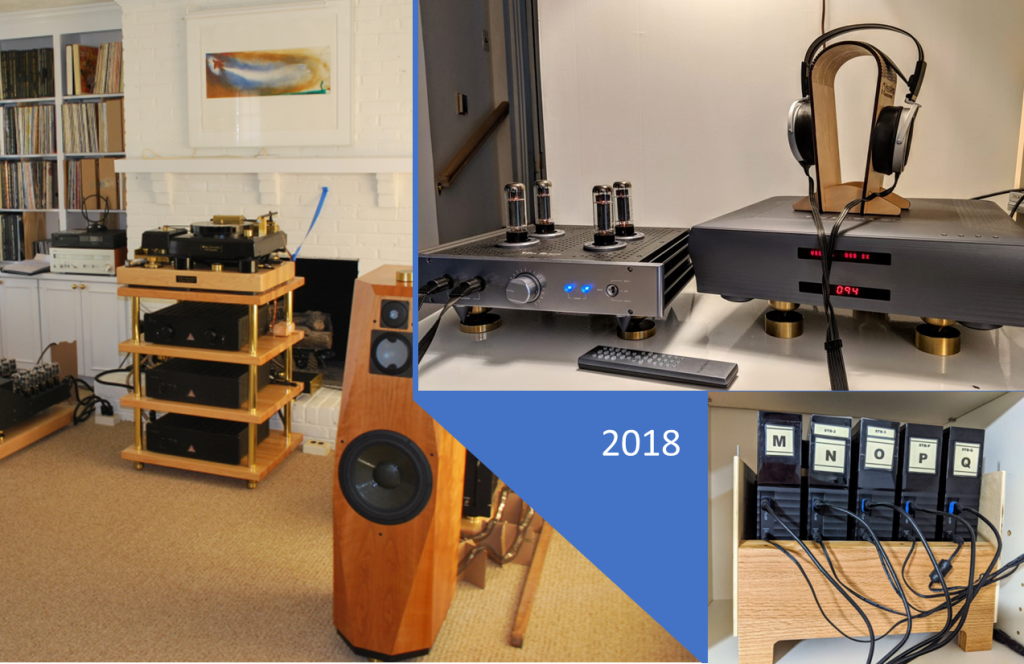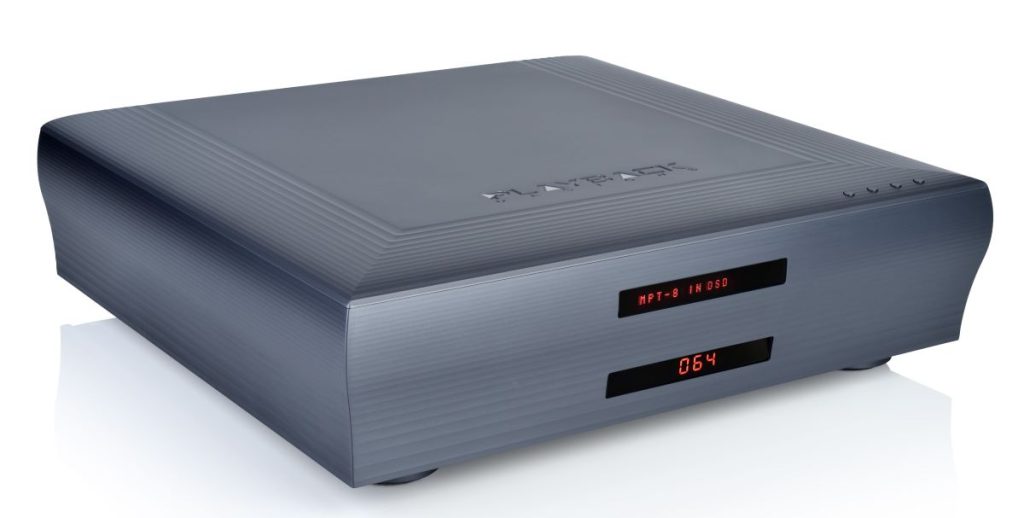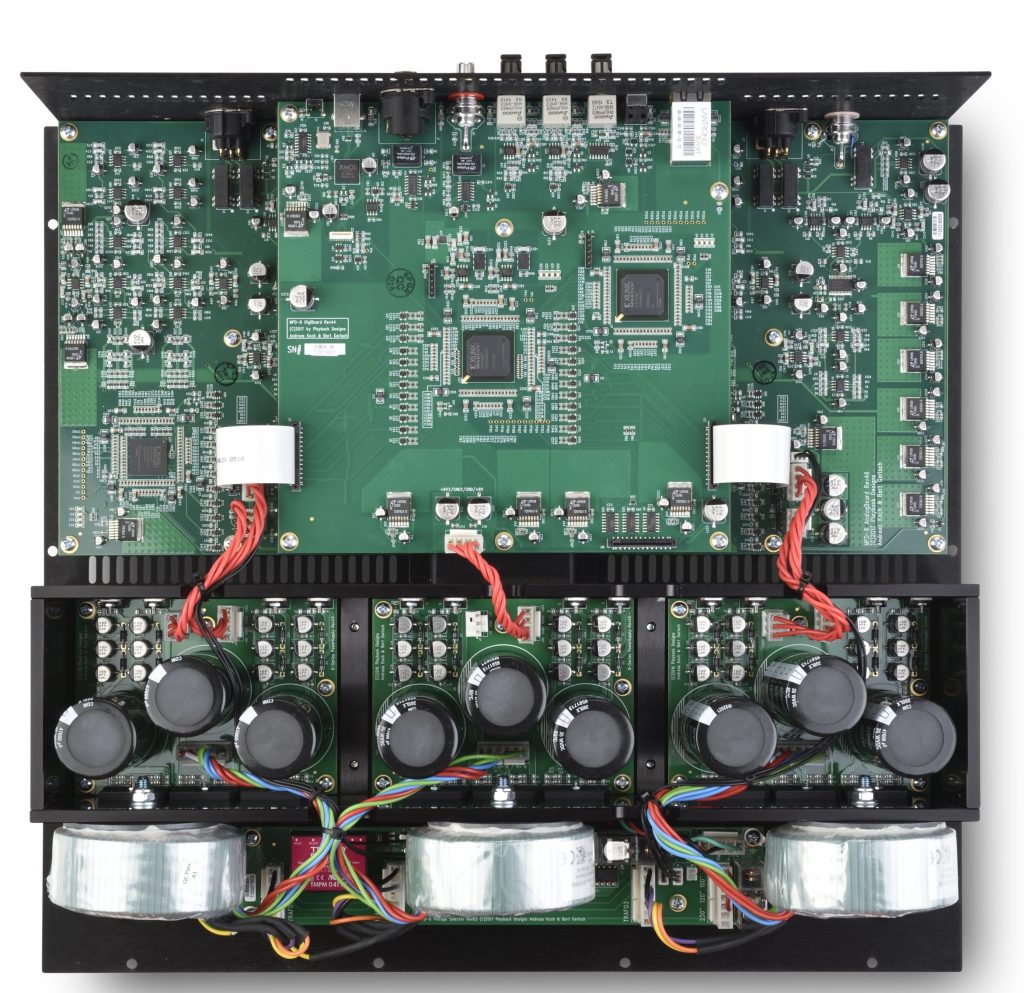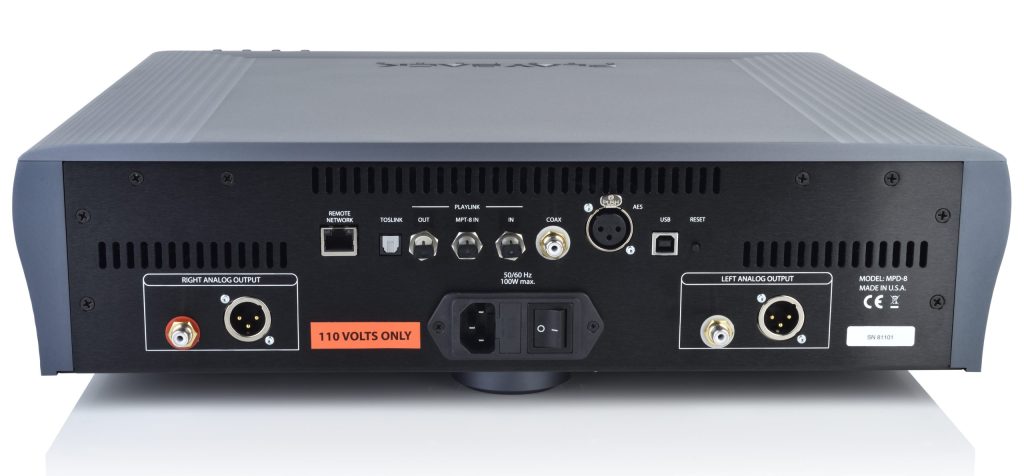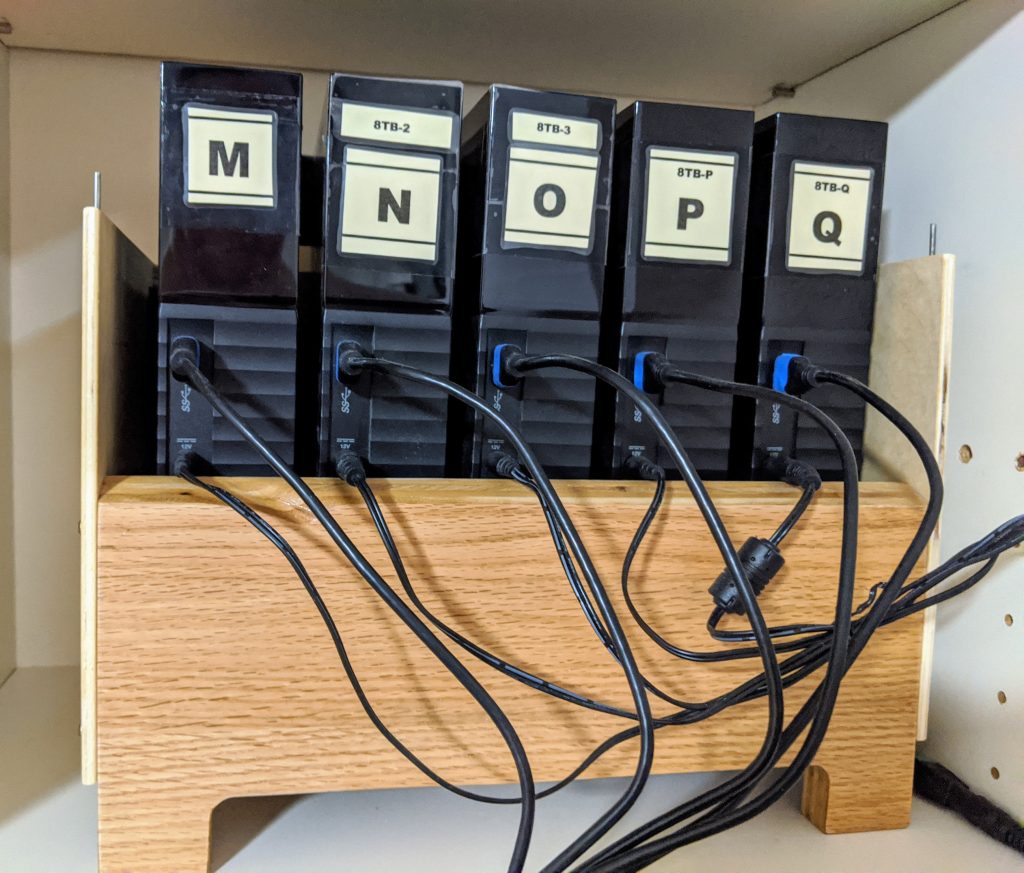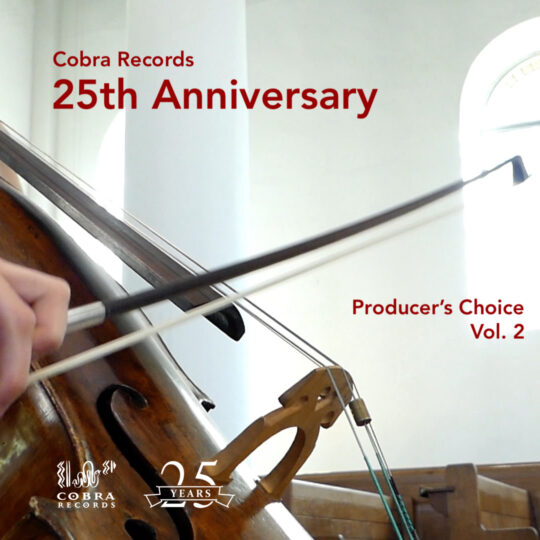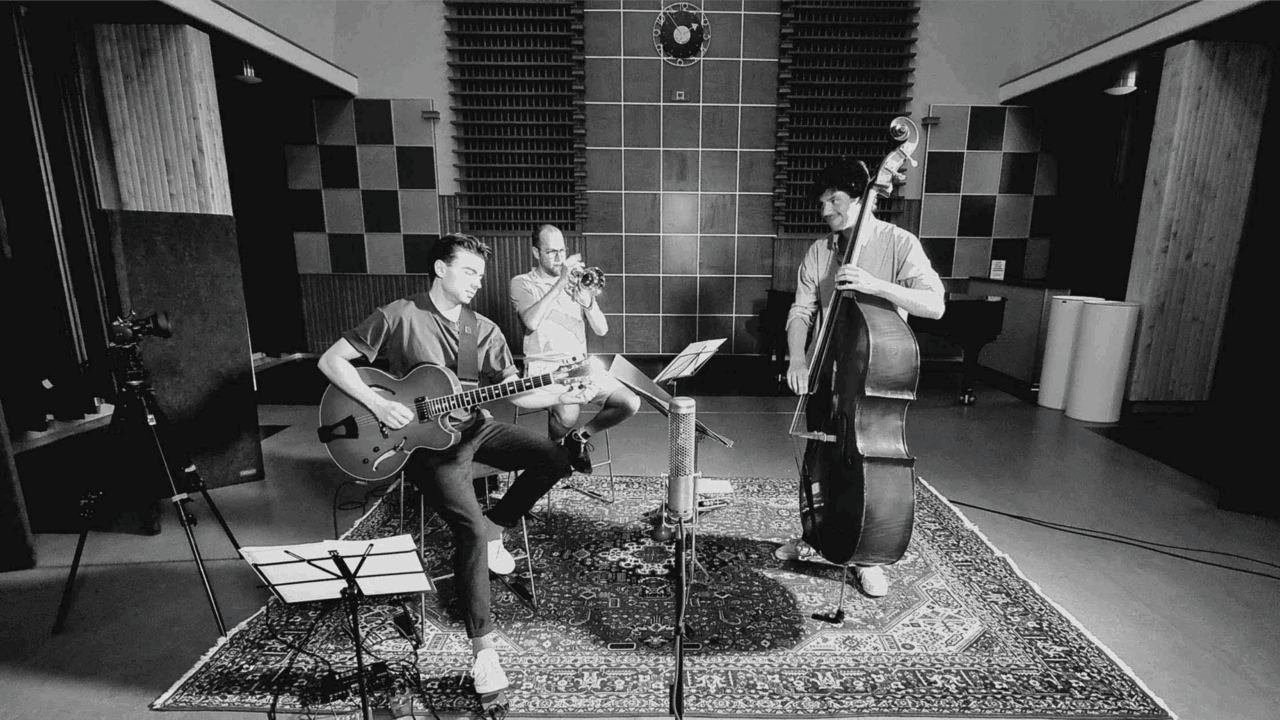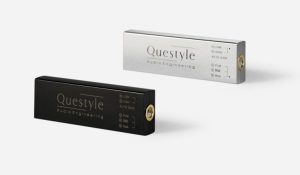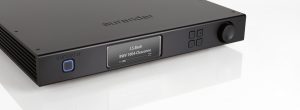We started our downsizing journey four years ago. I've written about that journey in four parts beginning HERE. I thought that after four years of experience with our all-digital, headphones-only listening system, an update might be worth sharing.
As we headed into the realm of digital-files-only listening, my heels were dug firmly into the dirt trying to avoid this journey away from my beloved LPs. Did we survive the journey? What have we found to be the pluses? What do we miss?
All-Vinyl system as of 2018, plus 2 rooms holding 8000 LPs (not pictured) on the left. On the right, today's All-Digital system with digital files and headphones.
The short answers are:
- Yes, we survived the transition—very happily, in fact—thanks to three very specific factors that I'll discuss more below.
- A big plus for the digital system is that Ann can now find music that she could never find among the plethora of LPs on the record shelves. This is thanks to the very comprehensive and fully indexed database at the core of our digital music library and to our music being entire in digital files, not physical media. (We use JRiver, but Roon is a fine alternative.)
- A second big plus for the digital system is that we now are listening to a broad range of new musicians, new performances, and new musical compositions—musicians and music that were not available to us on vinyl.
- What do we miss? The many LPs that will never make it into digital format and that we'll always miss. (But the deep HDTT catalog is coming up with surprises every week!)
So what are the factors that make us very happy with this transition?
First, our digital music library contains a tremendously broad selection of music by incredibly good artists, just as our LP library once contained. The difference is that we now also have access to contemporary artists who have only recorded in the digital era. These are artists whose performances we'd never heard before.
At the same time, we have transfers to digital of many of the excellent analog recordings from the 50s, 60s, and 70s. (Just look at some of my articles about albums available in the HDTT catalog from the golden era of stereo: Decca, RCA Living Stereo, Mercury Living Presence, EMI, DGG, Westminster, Everest, Vanguard. Prestige, Blue Note, Riverside... I've been able to replace core elements of my classical music library in excellent sound quality via the treasures contained in the HDTT catalog. So, we are enjoying the best of both worlds: many of the great classic recordings plus a broad range of modern recordings and artists.
Second, convenience of access is at a whole new level of nice. With all our music stored on computer files indexed in a database (JRiver, in our case), we can easily find the music we want to hear at any given time. Selecting a different piece of music or comparing performances by different artists is a quick snap. Ann can now find that performance of Samuel Barber's Toccata Festiva, or John Rutter's Gloria, or Emmylou Harris' joint albums with Linda Ronstadt and Dolly Parton, in just a moment's computer search. She doesn't need my memory of on what shelf, filed under what name, and combined on an LP with what other music she needs to search.
Third, the sound quality we are enjoying continues to satisfy us immensely. It punches all of our little audiophile buttons in terms of accuracy of instrumental sound (timbre), transparency, dynamics, the feeling of the instruments being real instruments in a real acoustic space (on the better recordings). Is it better that vinyl? Hmmm, it is different. And we can leave further discussion for another time. Suffice it to say, we are very very pleased with the quality of sound we hear on good DSD256 and DXD recordings.
And a special bonus coming from our choice of digital playback equipment—this new system is allowing us to enjoy standard 16/44.1kHz files (Redbook CD resolution) to a degree I never expected would be possible. Just the other day, Ann came enthusiastically exclaiming, "I've just listened again to the wonderful 1980 performance of Mahler's Second Symphony with Solti and the CSO. It sounded SO good. And it's a standard CD file, too!" Since a huge portion of our music library is still standard CD resolution, the ability to get good sound from ripped CD files is very important to both of us. That the MPD-8 should make standard CD quality files so listenable was something we simply had never anticipated. Hurrah for unexpected gifts!
The Core of our Digital System—the amazing Playback Designs MDP-8 DAC
The Playback Designs MDP-8 DAC, designed by Andreas Koch, is the core of our listening system. Yes, it is expensive. But our commitment was to treat digital playback with the same respect (and need for significant financial investment) as we'd always treated our vinyl playback. If we were to travel this path, we'd do so by selecting the best sounding digital equipment we could find, limited only by what we could afford to invest. (Ah, there's always a budgetary limit, isn't there?)
Playback Designs MPD-8 Dream Series DAC
We discovered Playback Designs through various of Dr. David's articles on Positive Feedback. David had rewarded Playback Designs' earlier generations of gear with multiple Brutus Awards. And at this time (2018), designer Andreas Koch was taking his decades of digital design expertise and pouring it into a no-compromise pinnacle of design: The Dream Series. With a tagline of We build dreams, where others barely dare to dream..., how could one not be intrigued?
Knowing what a strong supporter of DSD was Dr. David (Positive Feedback's Editor-in-Chief), I just had to reach out to him for his thoughts even at this early stage. I knew that DSD, particularly DSD256, was the level of playback at which we needed to aim to have any hope of achieving our listening goals. It turns out, David had a Playback Designs Dream Series unit (the MPS-8 Digital Music Player, a combination SACD/CD transport and DAC) headed his way for audition. For him, SACD playback was a must given the extensive SACD library housed at Positive Feedback HQ. He was quite optimistic about this unit, but needed to hear it first, of course.
And in the August 2018 edition of Positive Feedback, David posted his Impressions after living with the MPS-8 optical transport and DAC for two and a half months. His conclusion: "The new Playback Designs MPS-8 SACD/CD player must rank as the finest SACD/CD player that I've ever heard. Period."
Well, now. That's strong encouragement. But my eyes continued to rest on the dedicated quad DSD DAC, uncompromised by transport, a pure assault on the state-of-the-digital-arts. I was headed to a world of files only, no optical media to store or play back. What attracted me to the MPD-8 was that Andreas was able to use the full acreage within the chassis for total isolation, which included three separate power supplies: one for the digital stage and two separate power supplies for the analog stage (one for each channel).
So, when David and I next spoke, I asked why not go for the MPD-8 as a fully no-compromise quad DSD DAC with its massive fully isolated power supplies and then add the dedicated MPT-8 transport? The MPS-8 integrated player is a compact all-in-one unit, but it is a compromise. A very fine compromise, to be sure. But a compromise nonetheless.
After some discussion with Andreas Koch to reassure ourselves of his design parameters for the MPD-8, the following factors were what convinced us that the MPD-8 would be the right choice. Except for the triple power supplies, many of these hold true for the MPS-8, also.
-
The DAC is designed around the use of powerful Field Gate Programmable Array (FGPA) computer chips that hold massive computing power. Andreas has developed the proprietary algorithms that he programs into these FGPAs. Because the filters and the digital decoding are based in software, it is upgradeable as he finds improvements that he can make in the algorithms. The MPD-8 is not locked into the design hardwired into a silicon chip. And it is field upgradeable by the owner—I've done one!
-
Custom-designed regulated analog power supplies for each analog channel plus the digital stage. I keep repeating this. It is important. Completely separate analog regulated power supplies are provided for the analog circuitry for each channel, mounted on ceramic circuit boards. A third separate analog regulated power supply is provided for the digital section. This continues the design philosophy of massively isolating all the stages, channels, analog and digital circuitry for low noise and low distortion. Look at the top cover removed photo below to see the large toroidal transformers for each of the three power supplies and the metal shielding that separates the power supplies from the internal circuitry. These power supplies were designed by Playback Design's Bert Vogt who developed all the analog circuitry for the Dream Series.
-
All input is processed through a multiple steps of filters and DSD conversion, depending on the source. PCM files go through an apodizing filter of Andreas' design to eliminate some of the early generation digital noise and distortion that may exist. They then get converted to DSD as soon as possible. DSD signals skip the apodizing filter but do get modulated to higher frequency levels of DSD. All signals once in DSD are modulated upwards to an extremely high frequency so that it is almost an analog wave form before the Digital to Analog conversion is made. I think I recall Andreas saying this frequency modulation was up to 8x times the DSD64 frequency (DSD1024 is only 6x). At this point, the digital DSD signal is almost an analog wave form and the final conversion to analog is quite an easy process—at least according to Andreas, a mathematician of some considerable skill.
-
Uber-sophisticated, ultra-low-distortion, low noise analog volume control built in, with fine stepping. It is digitally operated but full analog in function. And it can be fully bypassed if you wish. When I asked about using this or the volume control in my preamp, Andreas said he doubted another volume control could be as good as the one his design partner Bert Vogt had built in.
-
The analog side is double differential for each channel and highly separated and isolated from the digital side.
-
Given the sensitivity of digital circuits to extraneous electrical noise, even the panel displays have been chosen for minimal electrical leakage.
-
For the audio sample clock Playback Designs uses a proprietary generator designed to eliminate any correlated jitter that can negatively impact the sonic performance. As one of the most critical technologies in a DAC, special attention was given to the analog circuitry for the clock generator by refining it with the lowest noise linear regulators available in the market today. Andreas says the result is the cleanest clock generator he has ever designed and its performance cannot easily be matched by any competitor’s design.
- Playback Designs Frequency Arrival System (PDFAS) technology developed by Andreas Koch that eliminates the need for conventional “Phase Locked Loops” (PLLs). According to Andreas, conventional PLLs‘ ability to control and minimize jitter is limited by their inherent need to maintain phase coherence with the incoming signal. The PDFAS is not limited by this requirement and therefore eliminates completely the effects of transmission induced clock jitter.
-
By application of PDFAS technology at the input of the DAC, Playback Designs is able to confidently use USB as the principal data input interface covering all digital formats and frequencies up to Quad DSD (DSD256 or 11.2MHz) and DXD (352.8 and 384kHz). The DAC currently will not accept DSD512 or DSD1024 input files, however.
-
To take the DAC to a yet higher level of performance, it is possible to keep the USB interface entirely outside the chassis by using an optional separate interface box offered by Playback design (the optional USB-XIII, soon to be USB-XIV, interface) for better isolation via their proprietary optical connection (PLink). In this case, the input signal will be processed through a PDFAS in the USB-XIV and then a second time on entry into the DAC for even greater noise and jitter reduction. (I have not heard this DAC with the USB-XIII, but would love to do so.)
- Dr. David said the MPS-8 sounded exceptionally good—some of the best he'd heard, with a consistent track record of excellence over several prior generations of equipment released by Playback Designs. And, my conversations with a few other owners and reviews (largely in the Asian audiophile press) of the MPD-8 gave us confidence.
Playback Designs MDP-8 top cover removed. Click for larger view.
Playback Designs MDP-8 rear panel. Click for larger view.
Clocks? Not needed
A unique feature of the MPD-8 is its elaborate and sophisticated clock generator which does not require to be locked to an external source. It completely shields any incoming digital audio stream from its sensitive internal clock circuitry through various stages of buffering with unique control algorithms. This removes any incoming jitter from external sources so well that no complicated setup with master—slave clocking configurations are needed, as is often the case with other equipment. In fact, the MPD-8 performs equally well with jittery sources as with higher quality ones. For this reason the MPD-8 does not require an external clock nor does it require to be set up as a clock master.
Specifications, as provided by Playback Designs:
- Digital Inputs: USB up to 384kHz PCM and up to 11.2MHz DSD
AES (PCM up to 192kHz, DSD via DoP)
Coax (PCM up to 192kHz, DSD via DoP)
TosLink (PCM up to 96kHz)
PLINK optical (PCM up to 384kHz, DSD up to 11.2MHz) - USB compatibility with Windows, Apple OS, Linux
- Analog outputs: Balanced on XLR connectors; Unbalanced on RCA connectors
- Both analog outputs can be set to fixed values of -6dB, -3dB, 0dB,
+3dB, +6dB and variable for full analog volume control (see below). - Double Differential discrete DAC
- Double Differential ultra high end analog stages per channel
- Three regulated analog power supplies with three transformers
- DAC architecture: Discrete with Playback Designs’ own proprietary digital algorithms and dual differential analog output stage. Each analog output stage (for each channel) is completely separated on its own printed circuit board with its own independent linear power supply for maximum performance.
- Volume control: An ultra high end analog volume control can be activated for each
channel. - Software update: Free software upgrades with new features or new algorithms that the end user can upload into the DAC without the need to return it to the dealer or manufacturer.
- Remote control: A hand-held IR control set is provided in a sleek case with lit buttons.
- Retail: $27,000 (as of 2022, by pre-order in production runs)
What do we hear?
Ann and I spent some time talking about what we hear in the MPD-8's ability to reproduce our files that attracts us so much. In summary, we'd both say it not only renders DSD256 and DXD files in a marvelously lifelike way, it also has the magical ability to make lesser resolution files sound good. This is its super-power.
The MPD-8 is not the right device to hear what different formats sound like by comparison one-to-the-other. So, don't use it to understand what PCM 24/96 sounds like compared to PCM 16/44 compared to DSD64. I tried it, but while one certainly hears differences, the MPD-8 is doing its best to make them all as sonically enjoyable as possible—not dissecting and laying bare the differences.
This is a music-lover's DAC.
It is for the person who places priority on musical enjoyment with excellent sonics, but doesn't place highest priority on being able to make equipment comparisons or file format comparisons. And this is us. I am not an equipment reviewer. Dr. David wouldn't let me in the door around his magazine as an equipment reviewer. While Ann and I sure do value excellent gear (we've bought our share over the years), our focus is listening to music. We don't swap gear in and out, and we don't have a range of components against which to make comparisons. But we do make judgements, and we are very critically selective, about the gear we choose to keep in our listening system.
We've now enjoyed the MPD-8 as the center point of our music playback system for four years. And after this time and and hundreds of listening hours we continue to be in love the musical engagement it delivers. Ann has a second system in her office, but she regularly says "Listening there is very good, but it is no where near the magic of the MPD-8."
What makes the MPD-8 so special for us? We value a system that delivers the timbre of real instruments performing in a real acoustic space. And we also value very high resolution and transparency. We're not looking for a dissection tool that brings hyper-detail that, for us, sounds artificial. But we need the detail and transparency that allows us to easily differentiate among instruments, to hear the rosin on the bow, to hear the vibration on the skins of the timpani. We also value dynamics--not just the ability to play loud, but the more important ability to react quickly with the micro-dynamic changes that allow the similitude of life to recorded music.
The MPD-8 delivers all of this and more.
Over the months, and now years, we have consistently been struck by how organically "right" this DAC sounds. It operates at the level of the best analog sound I've ever experienced. With the best source material (meaning DSD256 and DXD files recorded with exceptional skill by contemporary recording engineers such as Jared Sacks, Tom Peeters, Gonzalo Noqué, Bert van der Wolf, and a few others), the MPD-8 is simply a transportive listening experience.
But not all of our digital music library is of this quality. We have hundreds of recordings that are CD Redbook quality. On other systems we've found CDs to be barely listenable. Yet, on the MPD-8, designer Andreas Koch has worked some sort of magic. Through some alchemy, even CDs sound better than they have any inherent right to sound. Andreas has tried to explain to me that this is not magic, it is all about engineering, anti-aliasing algorithms, internal conversion of the PCM to DSD... I prefer to simply say it's magic because the sound we hear is just so enjoyable.
This is the "super power" of the MPD-8. It is able to make even lower resolution digital files sound immensely better and more musically enjoyable than when heard anywhere else. And this is what our music life is all about, is it not? The ability to enjoy the music in the many forms in which it is available to us.
I asked Andreas how he was able to make even 16-44kHz PCM files sound so good. His response was that it is all in the algorithms and the multiple stages of processing that are built into the MPD-8 design.
When given Redbook CD files, the MPD-8 first applies some anti-aliasing and apodizing filtration to clean the file of extraneous distortion that earlier digitization circuits tended to leave behind. Then, as with all PCM files, the MPD-8 converts the file to DSD128 using his proprietary algorithms in the process. As described earlier, from there the MPD-8 treats the file as all other DSD input and modulates the data stream upward in frequency (by 8X times the DSD64 frequency of 2.8224 MHz, if I recall correctly) until the data stream is virtually an analog wave. Only at this point is the final conversion made to the analog output that the DAC then feeds to its analog outputs.
Pure DXD256 and DXD files
It is when listening to Pure DXD256 and DXD files (the former easily heard as more transparent) that the MPD-8 truly shines. Dynamics are shattering, from the almost-cannot-hear-it to the thunderous. Micro-dynamics are opened up and clarified with a resolution that truly makes acoustic instrument recordings sound absolutely alive and real. On good recordings that preserve the delicate spatial information cues (like those from Jared Sacks and Gonzalo Noqué), the rendering of natural acoustic space in which the performance occurred is nuanced and superb.
Just listen to the wonderful recent recording, Tuhu by French guitar virtuosa Gaëlle Solal recorded in the Auditorio of the San Francisco Church in Avila, Spain (HERE) or the outstanding recent recording by Angelo Verploegen, The Art of Traveling Light, recorded in the always acoustically fine MCO, Hilversum, Netherlands (HERE) for examples of excellence in retaining the natural acoustic environment of the recording venue. If you are not hearing the natural reverberation, decay, and air from the hall very delicately reproduced, your system is limiting you.
The MPD-8 revels in unpacking orchestra complexity and presenting the inner details that so much other equipment obscures. At the same time, it's ability to reproduce accurately the timbral characteristics of the instruments to easily allow one to follow the musical line from one instrument, one section of the orchestra to another, is uncanny. It is as good at this as the best vinyl recordings played on my analog playback system, and very possibly better. Just listen to the opening movement of Mahler's Das Lied von der Erde with Ivan Fischer and the Budapest Festival Orchestra recorded in DSD256 by Jared Sacks (HERE). The inner detail, the accuracy of timbre, is simply stunning with the MPD-8. As things get more complex, the MPD-8 stays completely unruffled. It simply unpacks and presents all that is there with remarkable clarity.
And for delicacy of reproduction, I invite you to listen to Gonzalo Noque's recent release of the Bach Violin and Harpsichord Sonatas in Pure DSD256 (HERE). The transparency, resolution and accuracy of timbre as heard on the MPD-8 is simply stunningly good.
We have a second system for Ann to use in her study. It is quite good. But when she wants to REALLY hear the music, she wants to listen on the primary system because of the magic delivered by the MPD-8. Yes, we also have the Stax 009S headphones in the primary system, but it is the MPD-8 that Ann comes to hear. "Why should I listen to the other system, when I can hear this music with the MPD-8?" she will ask rhetorically. And, yes, why indeed?
Product photos of MPD-8 courtesy of Playback Designs




